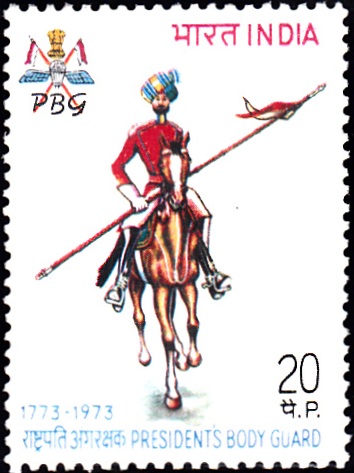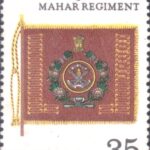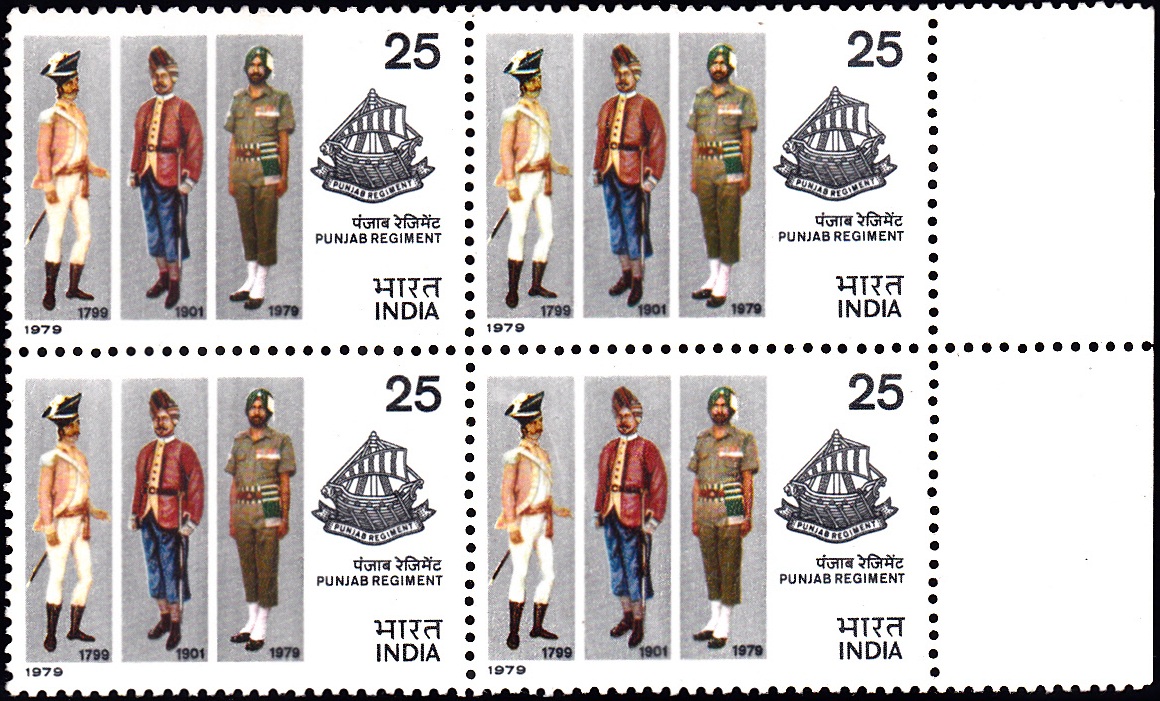
Indian President’s Body Guard 1973
A commemorative postage stamp on the Bicentenary of the President’s Bodyguard (PBG), an elite household cavalry regiment and senior-most unit in order of precedence of Indian Army :
Issued on Sep 30, 1973
Issued for : The Posts & Telegraphs Department are privileged to bring out a stamp commemorating the 200th anniversary of the founding of the unit, which is now known as “PRESIDENT’S BODY GUARD”, and whose motto is, “BHARAT MATA KI JAI”.
Description of Design : The design of the stamp is vertical and depicts the President’s Body Guard. The emblem of the President’s Body Guard appears on the top left corner.
Type : Stamp, Mint Condition
Colour : Multicolour
Denomination : 20 Paise
Overall size : 3.91 X 2.90 cms.
Printing size : 3.56 X 2.54 cms.
Perforation : 13 x 13
Watermark : Unwatermarked H–2 P.G. coated paper
Number Printed : 30,00,000
Number per issue sheet : 35
Printing Process : Photogravure
Designed and Printed at : India Security Press
About :
- The President’s Body Guard which celebrated its bicentenary on 30th September, 1973 took precedence over all other units of the Indian Army. It was raised in 1773 by Warren Hastings in Banaras, the role of the new regiment being both operational and ceremonial. In fact, for the next eighty years, it fought in all the major campaigns – the Governor-General taking the field as Commander-in-Chief.
- The Body Guard was raised as a cavalry unit at a time when the Bengal military establishment of the East India Company possessed no other cavalry. Although it has remained a mounted unit for two hundred years, it has, in fact, proceeded on active service in a number of roles, other than as a cavalry unit – as Artillery (in Egypt, 1801-1802), as Marines in 1809, as Dismounted Cavalry (in Java, 1811), as mechanised troops (in the Second World War, 1943) and as paratroops (as part of 44 Airborne Division, 1944-46).
- The Body Guard unit initially was known as ‘The Governor’s Troops of Moguls’ in 1773. Later from 1784, it came to be known as ‘The Governor-General’s Body Guard’. Again from 1950 onwards, it is called “The President’s Body Guard”.
- When the Body Guard was first raised, its strength was 2 officers and 112 other ranks – which is approximately what it is today. However, there were times when for the purpose of going to war, the strength of the unit was considerably increased. In 1845, for instance, the strength of the Body Guard rose to its all time high – a total of nearly two thousand.
- The winter ceremonial uniform consists of a head-gear in the form of a Turban in blue with gold embroidery. The frock coat is of scarlet cloth with twelve Regimental brass buttons in front. It has a raised neck with pattern sleeves and gold embroidery. White pantaloons with Napolean boots and spurs, complete the uniform. The horse is always Bay in colour, it has a blue saddle cloth with a sheep skin rug on the saddle. The Sowar carries a lance with a red and white pennant. The red over white of the pennant signifying “BLOOD BEFORE SURRENDER”.
- The Sowars who are enlisted in the Body Guard are hand-picked. They are selected for their ability to become proficient horsemen, tankmen and paratroopers. The minimum height for enlistment to the Body Guard is six feet.








[…] of the Armoured Corps, entitled to stand on the right of all units on parade next after the President‘s Body […]